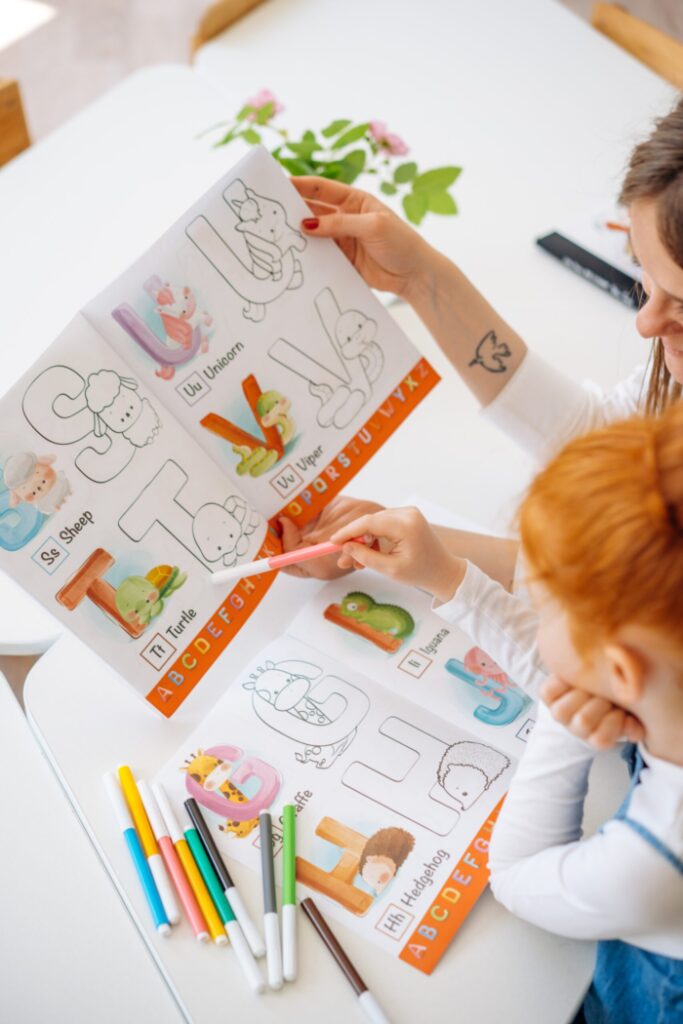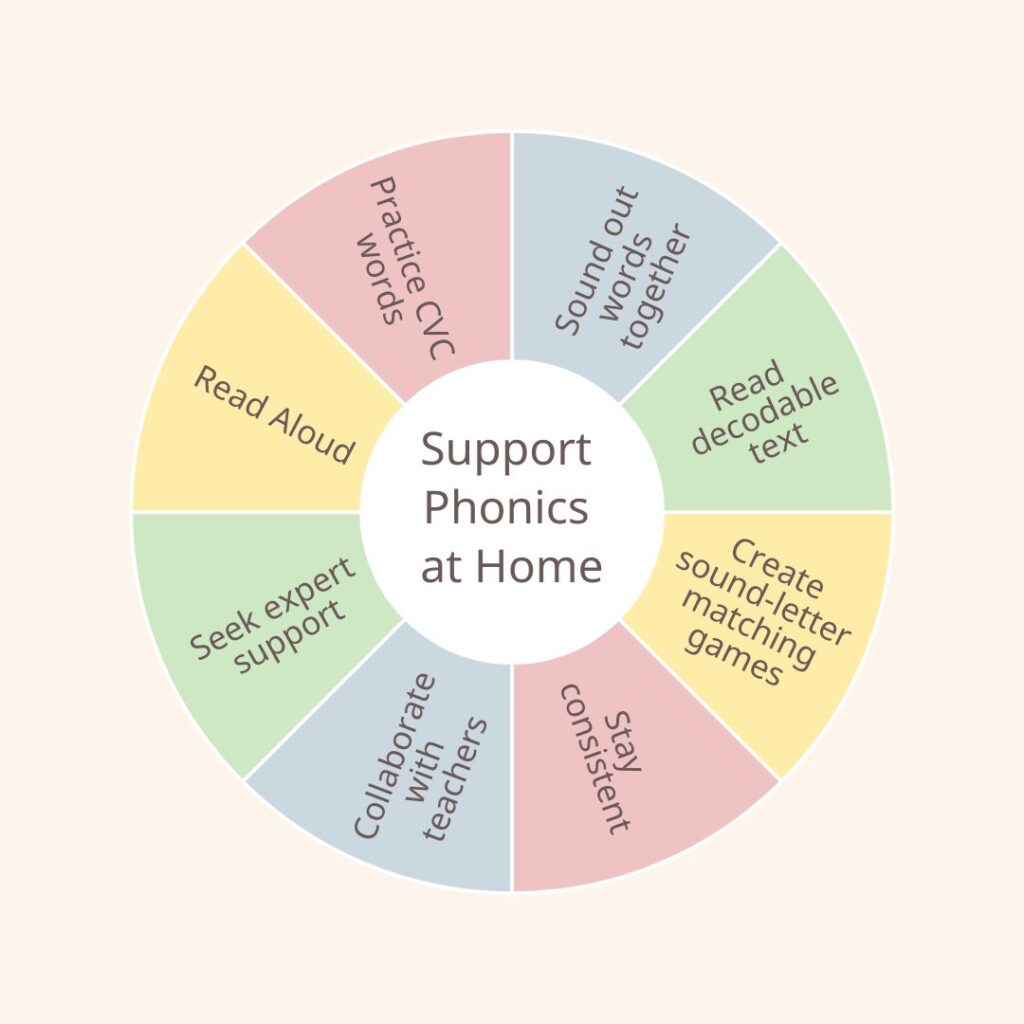Imagine this: a third grader, Michael, comes into a tutoring session feeling frustrated because he can’t keep up with his peers during group reading. He knows some words by sight but stumbles on unfamiliar ones, guessing at them or skipping them altogether. Within weeks of targeted phonics practice—focusing on matching sounds to letters and blending them—his confidence and skills soar. He starts raising his hand to read aloud in class, something he avoided before.
This transformation is why phonics is so powerful. Phonics is the bridge that connects sounds (phonemes) to written letters (graphemes), enabling children to decode and spell words effectively. It’s not just about reading books; it’s about unlocking a lifelong skill that builds fluency, comprehension, and a love for learning.
In this blog, we’ll explore why phonics is essential for early readers, how it works, and how you can support your child in building this critical foundation. Whether your child is just starting to sound out words or struggling to catch up, understanding the role of phonics is the first step toward empowering them as a reader.
What is Phonics?
Phonics is the foundation of learning to read and spell. It teaches children to connect sounds (phonemes) to letters (graphemes), giving them the tools to decode words systematically rather than relying on guesswork or memorization. This method helps kids break words into smaller parts, sound them out, and blend them back together—a skill that builds fluency and confidence over time.
The Core Components of Phonics
Phonemic Awareness: Before children learn to read, they need to understand that words are made up of individual sounds. Phonemic awareness—the ability to hear, identify, and manipulate those sounds—is an essential precursor to phonics.
Blending: This involves combining individual sounds (e.g., /c/ /a/ /t/) to form a word (“cat”). Blending is a critical skill for decoding new words.
Segmenting: The reverse of blending, segmenting involves breaking words into their individual sounds. For instance, a child learning to spell “dog” would identify the sounds /d/, /o/, and /g/.
Sound-to-Letter Mapping: Phonics instruction teaches kids how to match sounds to their corresponding letters, enabling them to read unfamiliar words with accuracy.
How Phonics Fits Into the Science of Reading
Phonics is a cornerstone of the Simple View of Reading, which states that strong reading comprehension results from two key skills: decoding and language comprehension. Phonics develops the decoding side, ensuring children can read words accurately and automatically, leaving more mental energy for understanding meaning.
Phonics also aligns with Scarborough’s Reading Rope, which illustrates how multiple reading skills—like phonological awareness, decoding, and vocabulary—intertwine to support fluent reading. Phonics strengthens the word recognition strands of the rope, creating a sturdy foundation for reading success.
Why Phonics Beats Whole-Word Memorization
Unlike strategies that rely on memorizing individual words, phonics prepares kids with the skills to tackle any new word they encounter. It teaches them to understand the language structure, making it easier to decode unfamiliar words and spell accurately. This approach boosts reading ability and fosters young readers’ independence and confidence. With phonics as part of your child’s learning journey, you’re setting them up for a lifetime of literacy and learning.
Why is Phonics Essential?
Phonics is the bridge that connects your child’s ability to recognize sounds with the ability to decode words, making it essential for reading fluency. Here’s why:
- Builds Decoding Skills for Lifelong Literacy: Decoding is the ability to translate written words into their spoken equivalents. Research shows that systematic phonics instruction helps early readers sound out unfamiliar words and creates the neural pathways that allow automatic word recognition. This frees up mental energy for comprehension and deeper learning.
- Supported by Brain Research: Studies in cognitive neuroscience reveal that systematic phonics instruction rewires the brain for reading. For example, brain imaging shows that children learning through phonics develop stronger connections in the left hemisphere—the area responsible for language processing. These findings underscore why phonics is so effective, particularly for new or struggling readers.
- Prevents and Addresses Reading Challenges: For struggling readers, phonics isn’t just helpful—it’s transformative. Programs based on systematic phonics often close significant literacy gaps, especially for children with dyslexia or those who find traditional whole-word memorization strategies overwhelming. By focusing on phonics early, parents can help prevent these challenges altogether.
Phonics lays the groundwork for all future literacy skills, ensuring children can confidently navigate the written word and thrive in their education.

How Does Phonics Work in Practice?
Phonics becomes effective through engaging and systematic practice. Here’s how it works:
Examples of Explicit Phonics Instruction
- Sounding Out Words: Teaching kids to blend individual letter sounds, like /c/ /a/ /t/ for “cat.”
- Phonics Games: Activities like matching sounds to letters or building words with letter tiles.
- Decodable Texts: Books designed to align with a child’s phonics knowledge, allowing them to apply new skills independently.
Systematic vs. Incidental Phonics
- Systematic Phonics: Structured lessons that build skills in a logical order (e.g., mastering short vowels before long vowels).
- Incidental Phonics: Addressing phonics concepts randomly as they come up in reading.
Systematic phonics has been proven more effective, ensuring no critical skill is overlooked. Mastering phonics early also lays the foundation for advanced literacy, like fluent comprehension.
What Can Parents Do to Support Phonics at Home?
Supporting phonics at home doesn’t have to be complicated. Here are actionable steps you can take to build your child’s phonics skills:

Use Fun, Simple Activities
- Sound-Letter Matching Games: Create flashcards with letters or sounds and have your child match them to pictures or words. You could even incorporate familiar family games, as suggested by Edutopia.
- Practice CVC Words: Start with easy consonant-vowel-consonant words like cat, dog, or bat.
- Read Aloud Together: Choose decodable books where your child can sound out words they’ve learned.
Remember, Consistency is Key
Set aside 10–15 minutes daily for phonics practice. Keep the atmosphere fun and encouraging to build confidence.
Seek Expert Support
Programs like TutorJack provide systematic phonics instruction in 1:1 settings combined with group practice, offering personalized and evidence-based support to accelerate learning.
Conclusion: Empowering Young Readers Through Phonics
As we’ve explored, phonics’ systematic approach builds the foundation for fluent, confident readers. Parents play a pivotal role in nurturing these skills at home and beyond by engaging in phonics development. Remember, learning to read is a process, and each sound, word, and story builds toward your child’s growth as a lifelong reader. By fostering phonics skills, you’re setting the stage for academic success and a love of reading that will benefit them for years to come. Take pride in your efforts—it’s an investment in your child’s future as a confident, capable reader. Here are some key takeaways about phonics learned in this blog:
- Phonics Builds Essential Skills: It develops decoding abilities and fluency, which are foundational for reading comprehension and confidence.
- Active Parent Involvement Matters: Simple, consistent activities like phonics games and decodable texts at home can make a big difference.
- Collaboration is Key: Work with teachers, tutors, and programs like TutorJack to reinforce systematic phonics instruction effectively.
- Phonics Leads to Lifelong Benefits: Early mastery sets the stage for academic success and a lifelong love of reading.

